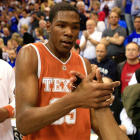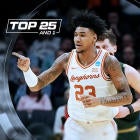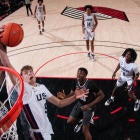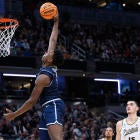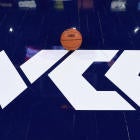CBS Sports is looking back at several of the defining college basketball players of the past and their Citizen Naismith Player of the Year seasons. This edition of the series, sponsored by Citizen, stars former Texas star Kevin Durant and his spectacular 2006-07 campaign.
Before Duke's Zion Williamson captivated college basketball fans around the nation last season, the brief Kevin-Durant-at-Texas era was the last time we had a mega-talented freshman who was also a wonderment, a unique specimen heretofore unseen. Sure, Anthony Davis' one-and-done season at Kentucky was special as well, but Davis wasn't even a leading scorer on that team. Durant, like Williamson, was must-see stuff because of his ability to do what he wanted when he wanted.
It feels like some of that has been forgotten, much of the reason being that Durant has turned into a first ballot Hall of Famer and been the second best player in the NBA for much of his career. He's now 13 seasons into his NBA journey with the Thunder, Warriors and now the Brooklyn Nets.
But what he did at Texas is absolutely a part of his name and legend. It's where it all began. The 2006-07 season is now largely remembered because of two things: 1) Florida captured back-to-back national championships; 2) Kevin Durant was a blaze of incredible basketball at Texas.
Durant averaged 25.8 points, 11.1 rebounds, 1.9 blocks, 1.9 steals and 1.3 assists in 35 games during that 2006-07 season. He became the first freshman to win the Naismith Award, lifting Texas to a No. 4 seed in the NCAA Tournament in the process. He was the first consensus NPOY as a freshman in the sport's history.
Whenever Durant steps away from college hoops, historians should note the origin story -- because it was such a special one. As I've written before, Durant arrived at Texas as a lanky dynamo on offense, a fawn on the fringe of basketball greatness. We saw the potential immediately. He was 6-10, scoring with ease and looked like he could snap like a wafer because of how light he looked and effortlessly he played.
He's become borderline unguardable over the past 10 seasons in the NBA. He was that, perhaps to an even bigger extent against amateurs, while in college. Durant was better than the spare one-and-done types who came before him, such as Carmelo Anthony, and redefined what it could mean to be a freshman college basketball star.
Seriously, if you've forgotten how fun he was, look at this.
There have been some fantastic stars in college hoops since then -- plenty! -- but I still can't put anyone alongside Durant in terms of his body type, natural scoring ability and magnetism. For as incredible as Williamson has been, his appeal comes with a lot of things, but shooting isn't one of them.
The progression of college and pro basketball is also due in decent portion to Durant, who popularized the concept of having a stretch 4 or stretch 5. Used to be that if you were 6-foot-9 or taller, stepping out to shoot a 3-pointer was a rare allowance, not an expectation from your coach. Now it's a fault if you're 6-10 and can't hit a shot from 20 feet.
Had Texas made a deeper run in the NCAAs, Durant's time there probably would be even more revered. But that speaks to the power March holds over the sport and our collective memory. Nevertheless, Durant has his No. 35 jersey retired in Austin and is unquestionably considered the best talent to ever wear a Longhorns uni. He went No. 2 in the 2007 draft, just behind Greg Oden out of Ohio State.
As I've written before: Durant was a shining example of the best and worst of the NBA's age-minimum rule. He had no business spending a season in college with that amount of talent, yet because he went to Texas, college basketball's 2006-07 was so much better because he was in it.
The signature performance came in a loss, in fact. Oklahoma State beat Texas in three overtimes on Jan. 26, 2007, the performance coinciding with Durant appearing on the cover of Sports Illustrated. Texas fell 105-103 to OSU and Mario Boggan, who traded big shot after big shot in what's remembered as maybe the best game in Big 12 history.
Durant had 37 points, 12 rebounds and four blocks. Boggan finished with 37 points as well -- plus 20 rebounds.
Big picture, Durant altered the paradigm of how freshmen are viewed in college basketball. It was anti-establishment prior to his era to truly consider a first-year player to be more valuable than sophomores, juniors and seniors. Now we see freshmen populating the First Team All-America lists annually.
We can't put an 18-year-old Durant into the modern college game, but I can assure you that he'd be just as good and dangerous and must-see in 2020 in the NBA as he was in 2007 with Texas.












